Painted Lady Butterfly Crumpled Wings: Causes and Solutions!
Crumpled wings in Painted Lady butterflies result from developmental anomalies, improper pupation, and environmental stressors.
During eclosion, insufficient humidity or temperature deviations can disrupt hemolymph circulation, preventing full wing inflation and sclerotization.
Mechanical damage from physical obstructions or mishandling also leads to irreversible wing creasing. Crumpled wings increase drag, reduce lift, and impair maneuverability, severely affecting flight performance and survival.
Environmental pollutants and habitat loss further exacerbate these issues by introducing mutagenic agents and reducing essential resources.
Detailed rehabilitation techniques and case studies provide insights into improving outcomes for affected butterflies. Continue to uncover the complexities surrounding their delicate development.
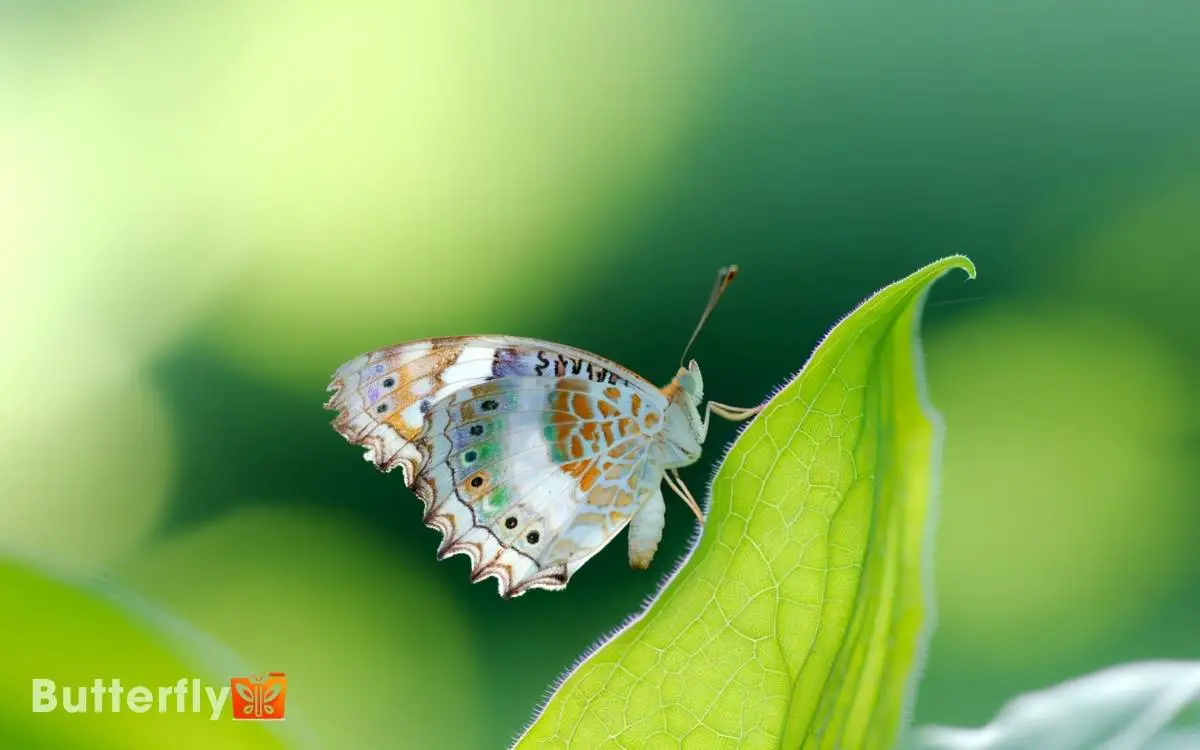
Key Takeaways
Understanding Crumpled Wings
In Painted Lady butterflies, crumpled wings can result from improper pupation, mechanical damage, or developmental anomalies. During pupation, ideal humidity and temperature are critical; deviations can lead to incomplete wing expansion.
Mechanical damage, often due to mishandling or collision within the enclosure, disrupts the delicate wing structure. Developmental anomalies, potentially influenced by genetic factors or environmental stressors, can cause malformations.
Observations indicate that compromised wings exhibit distorted venation, reduced surface area, and impaired flight capabilities.
Detailed examination under microscopy reveals abnormalities in the cuticle’s chitinous framework. Such deformations hinder the butterfly’s ability to feed and evade predators, ultimately affecting its survival.
Understanding these factors is crucial for effective conservation and breeding practices, ensuring healthier populations of Vanessa cardui.
Emergence From Chrysalis
Upon emerging from the chrysalis, the Painted Lady butterfly undergoes a critical period of wing expansion, which involves hemolymph pumping through the veins to inflate the wings.
Common challenges during this phase include environmental factors and physical obstructions that can impede proper wing development.
Effective post-emergence care is crucial to guarantee the butterfly attains full, functional wing morphology.
Delicate Wing Expansion
The moment a painted lady butterfly emerges from its chrysalis, hemolymph is rapidly pumped into its delicate, crumpled wings to facilitate expansion and hardening. This fluid, analogous to blood, circulates through the wing veins, causing them to inflate and straighten.
Concurrently, the butterfly engages in rhythmic abdominal movements, enhancing hemolymph flow. As hemolymph disperses, the wings gradually extend, spreading to their full span.
Within hours, the wings undergo sclerotization, a process where proteins cross-link to form a rigid structure.
This hardening phase is vital for flight capability. Any interruption in hemolymph distribution or sclerotization can lead to malformed wings, impairing the butterfly’s ability to fly and survive.
Therefore, wing expansion is a meticulously coordinated process essential for painted lady butterflies.
Common Emergence Challenges
Numerous factors can disrupt the painted lady butterfly‘s emergence from its chrysalis, leading to compromised wing development and subsequent flight issues. One primary challenge is maintaining optimal humidity levels, which can cause desiccation of the chrysalis.
Insufficient space for unfurling wings can result in physical deformities. Additionally, mechanical interference, such as accidental contact during the critical eclosion phase, can impede proper wing expansion.
Nutritional deficiencies in the larval stage also adversely impact the structural integrity of the wings. Another factor is temperature fluctuations, which can delay or hasten emergence, affecting the timing of wing expansion.
These emergence challenges require meticulous environmental control to ensure successful metamorphosis, as any deviation can result in non-viable adults incapable of flight.
Post-Emergence Care
Ensuring proper wing expansion and overall health post-emergence care involves maintaining a controlled environment with ideal humidity and temperature.
Relative humidity should be kept between 60-80% to facilitate wing expansion and prevent desiccation. Temperature control is vital, ideally maintained between 24-28°C to support metabolic processes.
Emerging butterflies should be monitored closely; malformed or crumpled wings might indicate suboptimal conditions.
Ensuring an unobstructed area for wing drying is essential; limited space can result in incomplete expansion.
Proper hydration is also critical; misting the environment lightly can help maintain appropriate humidity.
Observing for any signs of distress, such as excessive wing movement or inability to fly, can provide early indicators of required adjustments in care parameters.
Physical Damage Causes
Physical damage to the wings of Painted Lady butterflies often results from mechanical forces during their vulnerable pupal and emergent stages.
When the chrysalis is disrupted, either by accidental contact or inadequate support, it can lead to malformed wings. Improper handling during this critical time can cause irreversible creasing or tearing.
Additionally, entanglement in the chrysalis membrane during emergence can prevent the wings from fully expanding, leading to permanent crumpling. These mechanical forces disrupt the hemolymph flow, essential for wing inflation and hardening.
Scientific observations indicate that even slight disturbances can compromise wing morphology, affecting flight capability and survival.
As a result, minimizing mechanical stress during the pupal phase is essential for the effective development of Painted Lady butterflies.
Environmental Stress Factors
Environmental stress factors greatly impact the development of crumpled wings in Painted Lady butterflies. Temperature extremes can disrupt normal wing morphogenesis, while pollutants introduce mutagenic agents that lead to deformities.
Additionally, habitat loss reduces the availability of essential resources, exacerbating developmental anomalies.
Temperature Extremes Impacting Wings
Extreme temperature fluctuations can disrupt the proper development of Painted Lady butterfly wings, leading to structural deformities and compromised flight capabilities.
Thermoregulation in larvae and pupae stages is critical for normal wing morphogenesis. Deviations from ideal temperature ranges specifically, exposure to heatwaves or cold snaps can induce incomplete eclosion, resulting in crumpled wings.
High temperatures can denature proteins essential for wing membrane formation, whereas low temperatures may slow metabolic processes, impeding chitinous exoskeleton hardening.
Research indicates that thermal stress correlates with reduced survival rates and impaired dispersal, affecting population dynamics.
Environmental monitoring is essential to mitigate these impacts, highlighting the significance of understanding microclimatic variances and their direct influence on Lepidoptera wing integrity.
Pollution and Wing Deformities
Beyond temperature extremes, pollution also serves as a significant environmental stress factor, contributing to wing deformities in Painted Lady butterflies.
Heavy metals, pesticides, and industrial pollutants infiltrate ecosystems, leading to biochemical disruptions during larval development. These pollutants alter hormonal balances and impede proper wing morphogenesis, resulting in crumpled or malformed wings.
Observations reveal that polluted habitats exhibit higher frequencies of wing deformities compared to cleaner environments.
| Pollutant Type | Effect on Wing Morphogenesis |
|---|---|
| Heavy Metals | Disrupts cellular differentiation |
| Pesticides | Alters hormonal balance |
| Industrial Pollutants | Impedes genetic expression |
| Airborne Particulates | Causes oxidative stress |
Scientific studies emphasize the urgent need for pollution mitigation to protect butterfly populations from these adverse developmental effects. Understanding the precise mechanisms by which pollutants affect butterflies can inform conservation strategies.
Habitat Loss Consequences
Habitat loss, driven by urbanization and deforestation, devastates the Painted Lady butterfly populations by eliminating breeding grounds and essential host plants, thereby exacerbating environmental stress factors.
The destruction of native flora, such as thistles and mallows, critical for larval development, leads to reduced survival rates.
Fragmentation of habitats disrupts migratory patterns, forcing butterflies into suboptimal environments where they encounter increased predation and competition.
The absence of nectar sources further stresses adult butterflies, impairing their reproductive success.
Additionally, altered microclimates in deforested areas result in temperature extremes and moisture deficits, adversely affecting the Painted Lady’s physiological resilience.
Such environmental stressors collectively contribute to morphological deformities, including crumpled wings, thereby impairing flight capabilities and diminishing overall fitness.
Impact on Flight
A painted lady butterfly with crumpled wings experiences significant aerodynamic inefficiencies during flight.
The deformation disrupts the laminar flow of air over the wing surfaces, increasing drag and reducing lift. These aerodynamic constraints necessitate increased metabolic effort for propulsion.
Observations indicate that compromised wing morphology leads to irregular wingbeat patterns and diminished maneuverability.
Additionally, the reduced surface area impairs the butterfly’s ability to generate sufficient thrust, critically affecting its flight endurance and stability.
Consequently, the butterfly’s capacity to perform essential behaviors such as foraging, mating, and evading predators is curtailed.
The inability to achieve optimal flight dynamics underscores the pivotal role of intact wing structure in maintaining efficient aerodynamics and overall flight performance.
Survival Challenges
Painted Lady butterflies exhibiting crumpled wings face significant survival challenges, primarily due to impaired flight mechanics.
This morphological deformity increases predation risks by limiting evasive maneuvers and reducing the effectiveness of escape responses.
Additionally, these butterflies experience mating challenges, as their compromised mobility hinders mate location and successful copulation.
Flight Difficulties
Crumpled wings greatly impair the aerodynamic efficiency of Vanessa cardui, leading to decreased flight performance and heightened vulnerability to predators.
The wing deformities disrupt laminar flow, causing increased drag and reduced lift. Consequently, the butterfly’s ability to maneuver and sustain prolonged flight is compromised.
Observations indicate that individuals with crumpled wings exhibit erratic flight patterns and frequent ground falls, which suggest impaired stability and control.
These issues hinder their access to food sources and mating opportunities, critical for their survival and reproductive success.
Additionally, compromised wings result in increased energy expenditure during flight, further diminishing their overall fitness.
As a result, crumpled wings present significant survival challenges, necessitating adaptive responses or leading to reduced life expectancy in affected individuals.
Predation Risks
The compromised aerodynamics from crumpled wings not only impair flight efficiency but also greatly elevate the predation risks for Vanessa cardui by making evasive maneuvers less effective.
Reduced agility compromises their ability to execute rapid, erratic flight patterns essential for predator evasion.
Predators, such as birds and spiders, exploit these vulnerabilities. The butterfly’s diminished flight height and speed increase its exposure to ground and aerial predators.
Moreover, impaired wings hinder quick escapes from capture, leaving the butterfly more susceptible to predation.
Observations indicate a higher incidence of predation in individuals with wing deformities, underscoring the critical nature of intact wing morphology for survival. Crumpled wings substantially decrease Vanessa cardui’s overall fitness in predatory environments.
Mating Challenges
Deformed wing morphology in Vanessa cardui frequently impedes successful mating, as the compromised flight ability prevents effective courtship displays and territory defense. This condition restricts males from exhibiting ideal flight patterns essential for attracting females.
Additionally, deformed wings hinder males from establishing and defending territories, essential for mating success. Females also face challenges as impaired flight limits their ability to navigate to suitable oviposition sites.
- Courtship Failure: Male butterflies with crumpled wings can’t perform the complex aerial maneuvers required for courtship.
- Territory Defense: Reduced mobility prevents males from defending territories against rivals.
- Oviposition Site Selection: Females with flight impairments struggle to locate optimal sites for laying eggs, affecting offspring viability.
Understanding these survival challenges highlights the severity of wing deformities on reproductive success.
Lifecycle Implications
Observing the lifecycle of the Painted Lady butterfly reveals that crumpled wings can greatly impact its ability to thrive and reproduce. If a Painted Lady emerges with crumpled wings, it may struggle to fly properly, limiting its access to food and potential mates. This challenge can reduce its lifespan compared to other butterflies, leading researchers to study factors that influence survival rates. For example, understanding how long Red Admiral butterflies live can provide insight into the lifespans of similar species and the environmental conditions that support their longevity.
Crumpled wings hinder flight efficiency, reducing access to food sources and mating opportunities.
This morphological defect also heightens susceptibility to predation, as impaired mobility makes evading predators challenging. The inability to disperse over long distances limits genetic diversity and population expansion.
| Lifecycle Stage | Implication of Crumpled Wings |
|---|---|
| Larval | Limited mobility affects feeding |
| Pupal | Improper wing formation |
| Adult (Imago) | Impaired flight, reduced mating |
Entomological studies indicate that crumpled wings result from environmental stressors during the pupal stage or genetic anomalies. Therefore, understanding these factors is essential for conservation efforts and maintaining population health.
Identifying Crumpled Wings
To accurately identify crumpled wings in Painted Lady butterflies, one must examine the wing symmetry, venation patterns, and overall structural integrity immediately after eclosion.
The wings should display bilateral symmetry; any deviation often indicates crumpling. Venation patterns, the network of veins providing structural support, should be clearly defined and uniform.
Structural integrity can be assessed by gently extending the wings and observing for any folds, creases, or irregularities.
Key indicators of crumpled wings include:
- Asymmetry: Wings differ in shape or size.
- Venation Disruption: Veins appear misaligned or broken.
- Structural Deformities: Presence of folds, creases, or uneven surfaces.
These characteristics are essential for distinguishing healthy wings from those affected by deformities in Painted Lady butterflies.
Preventive Measures
Implementing effective preventive measures can greatly reduce the occurrence of crumpled wings in Painted Lady butterflies by ensuring ideal rearing conditions and handling practices.
Maintaining ideal humidity levels, approximately 60-70%, is vital to facilitate proper wing expansion. Temperature regulation, ideally between 24-28°C, supports metabolic activities necessary for development.
Additionally, minimizing mechanical disturbances during the pupal and emergent stages is essential. Secure chrysalises in a vertical orientation to mimic natural conditions and prevent gravitational malformations.
Providing ample vertical space in the enclosure allows for unhindered wing expansion post-emergence.
Sterilizing rearing containers and tools reduces pathogen-related deformities. By adhering to these scientifically-grounded practices, enthusiasts can greatly mitigate the risk of crumpled wings in Painted Lady butterflies.
Supporting Pollinators
Supporting pollinators involves creating and maintaining habitats rich in diverse, nectar-producing flora, ensuring a consistent food source for these essential insects.
A robust ecosystem that supports pollinators, like the Painted Lady butterfly, enhances their ability to thrive and reproduce.
Key methods to support pollinators include:
- Biodiverse Plantings: Integrating a variety of flowering plants that bloom at different times of the year provides continuous nectar availability.
- Pesticide Reduction: Minimizing or eliminating pesticide use helps prevent chemical exposure that can be harmful to pollinators’ health.
- Habitat Corridors: Establishing connected green spaces facilitates safe migration and genetic exchange between pollinator populations.
These strategies create a stable environment, promoting pollinator health and resilience, essential for maintaining ecological balance.
Rehabilitation Techniques
Rehabilitation techniques for Painted Lady butterflies with crumpled wings encompass meticulous methods such as wing splinting and controlled environmental conditions to facilitate proper wing expansion and functionality.
Wing splinting involves using lightweight, non-toxic materials to support the wings, ensuring the correct alignment for natural healing. Controlled environmental conditions, including ideal humidity and temperature, are critical to prevent further wing deformation.
Additionally, providing a diet rich in nectar and essential nutrients supports overall health and energy levels, enhancing the butterfly’s ability to recover. Regular monitoring allows for timely adjustments in rehabilitation protocols, ensuring the most effective treatment.
These techniques require precision and a thorough understanding of lepidopteran physiology to successfully restore wing integrity and flight capability.
Success Stories
Numerous cases have demonstrated the effectiveness of these meticulous rehabilitation techniques, with Painted Lady butterflies regaining full wing functionality and exhibiting normal flight behavior post-recovery.
Entomologists have recorded several notable success stories, highlighting the robustness of the applied methodologies.
- Case Study 1: A Painted Lady butterfly with severe wing crumpling achieved complete recovery, displaying symmetrical wing morphology and sustained flight endurance.
- Case Study 2: Another specimen, initially unable to lift off, exhibited restored flight competence after targeted physical manipulation and nutritional support.
- Case Study 3: A butterfly with partial wing damage demonstrated improved wing articulation and navigational precision following a series of rehabilitative interventions.
These success stories validate the protocols and reinforce the potential for widespread application in lepidopteran conservation efforts.
Future Research Directions
Exploring genetic factors influencing wing resilience in Painted Lady butterflies could reveal new therapeutic avenues for entomological rehabilitation practices. Researchers should prioritize identifying specific genes linked to wing development and structural integrity.
CRISPR-Cas9 gene-editing technology offers the potential to manipulate these genes, facilitating the study of their exact roles.
Additionally, investigating the impact of environmental stressors on gene expression could elucidate how external conditions affect wing morphology.
Another promising direction involves examining the molecular pathways involved in chitin synthesis and deposition, essential for wing strength.
Advanced imaging techniques, such as scanning electron microscopy, could enhance understanding of microstructural anomalies in crumpled wings.
These research avenues could ultimately lead to innovative strategies for mitigating wing deformities in Painted Lady butterflies.
Conclusion
To sum up, crumpled wings in painted lady butterflies, often a result of physical damage or environmental stress, greatly impede their flight capabilities, akin to a bird with clipped wings. Effective rehabilitation techniques and supportive measures can, however, foster recovery.
Continued research is crucial to uncovering the intricate mechanisms behind these deformities and enhancing conservation strategies.
By understanding and addressing these challenges, we can better support these crucial pollinators and maintain ecological balance.

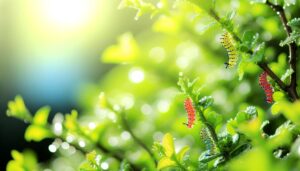
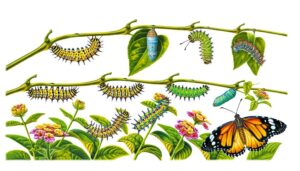
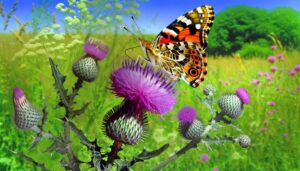
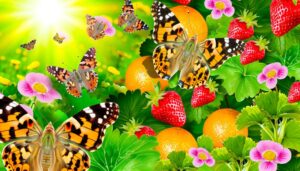


услуги по продаже аккаунтов услуги по продаже аккаунтов
продать аккаунт https://marketplace-akkauntov-top.ru/
магазин аккаунтов https://magazin-akkauntov-online.ru/
маркетплейс для реселлеров купить аккаунт
площадка для продажи аккаунтов маркетплейс аккаунтов
услуги по продаже аккаунтов площадка для продажи аккаунтов
купить аккаунт с прокачкой купить аккаунт с прокачкой
Guaranteed Accounts Accounts for Sale
Account Selling Platform Account Store
Account Selling Platform Account Selling Service
Account Selling Service https://buyaccountsmarketplace.com
Account Trading Account Buying Platform
Verified Accounts for Sale Website for Buying Accounts
Sell Account Account exchange
Account Exchange Service Online Account Store
Guaranteed Accounts Account Trading Service
Online Account Store Account Selling Service
buy account account selling platform
account catalog ready-made accounts for sale
accounts marketplace website for buying accounts
social media account marketplace accounts market
purchase ready-made accounts marketplace for ready-made accounts
account buying platform website for selling accounts
account buying platform account catalog
marketplace for ready-made accounts purchase ready-made accounts
account selling platform account exchange service
buy account account buying platform
account market accounts market
purchase ready-made accounts https://accounts-buy.org/
sell account account trading platform
account trading platform online account store
online account store https://buy-soc-accounts.org/
account buying platform find accounts for sale
account market secure account purchasing platform
buy pre-made account account trading service
accounts marketplace online account store
accounts market buy account
account selling platform database of accounts for sale
account market database of accounts for sale